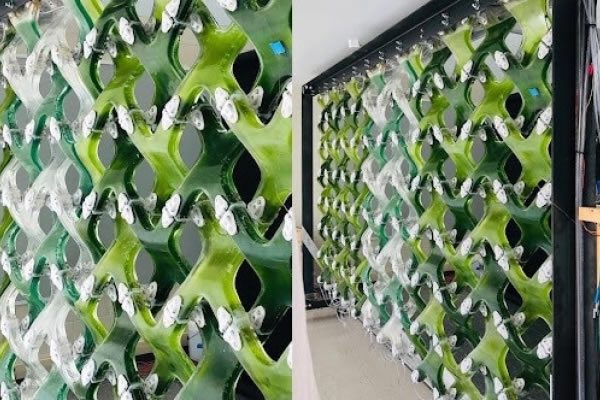Architecture professor receives $1 million grant toward commercializing energy-saving windows

A major grant from the National Science Foundation will fund the next stage of Professor of Architecture Kyoung Hee Kim’s development of a high-performing window system that reduces building energy consumption and carbon dioxide emissions. The Small Business Innovation Research Phase II grant is Kim’s third NSF grant in support of her decade-long research into incorporating screens of microalgae into biochromic windows.
“Algae has very effective carbon sequestration, doesn’t require land to grow, and doesn’t require agricultural water,” Kim explained. “It can use salty water or waste water, for example.”
The “biochromic” windows have multiple environmental, economic and health benefits, including increased energy efficiency, improved air quality, carbon capture and renewable energy production, since the algae can be collected and converted into biofuel.
Over the next two years, the SBIR Phase II grant of nearly $1 million will allow Kim to prototype the window, integrated with an intelligent control system to enable maximum performance; conduct performance testing and obtain performance certificates; scale mass production manufacturing; and carry out field testing and performance evaluation at early adopter’s buildings.
“I have been contacted for a few potential installation sites, including museums, residential buildings, commercial office and industry spaces,” Kim said. “Real-world installation requires rigorous testing and vetting processes before actual operations, and this NSF grant allows us to continue that next round of R&D activities. Our end goal is to be able to mass produce the system with an attractive cost for wide users and to obtain performance certificates from government authorized agencies.”
Earlier this year, Routledge published Kim’s book, “Microalgae Building Enclosures: Design and Engineering Principles.” Organized into four sections, the book begins with an introduction to the many attributes of microalgae and its potential uses in building systems and then examines case studies of uses in various settings in Africa, Asia, Australia, Europe, South America and North America. The third section of the book explains the design and engineering criteria, biotechnical design requirements and various performance metrics for microalgae architecture. The final section considers different applications, including new construction in low-rise and high-rise buildings and retrofitting for improved energy efficiency.